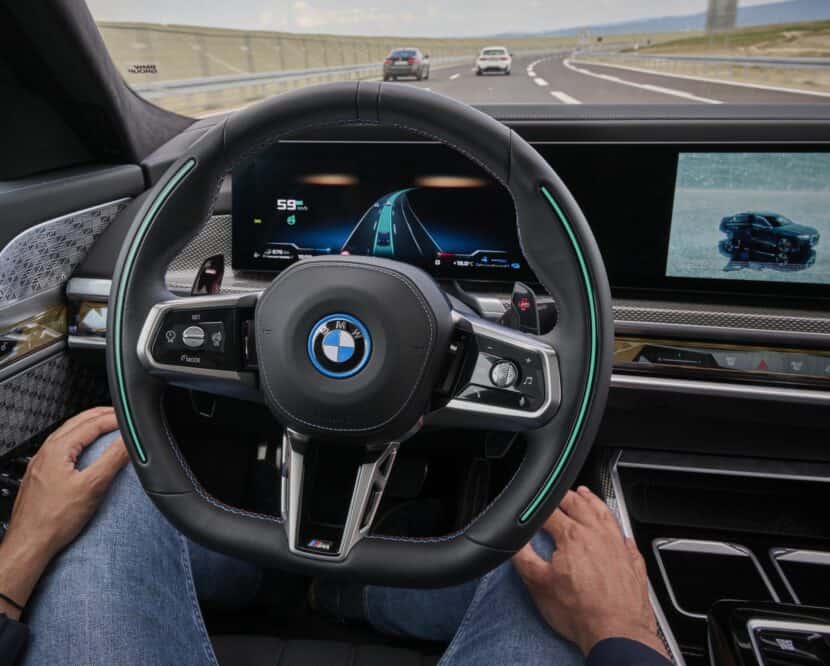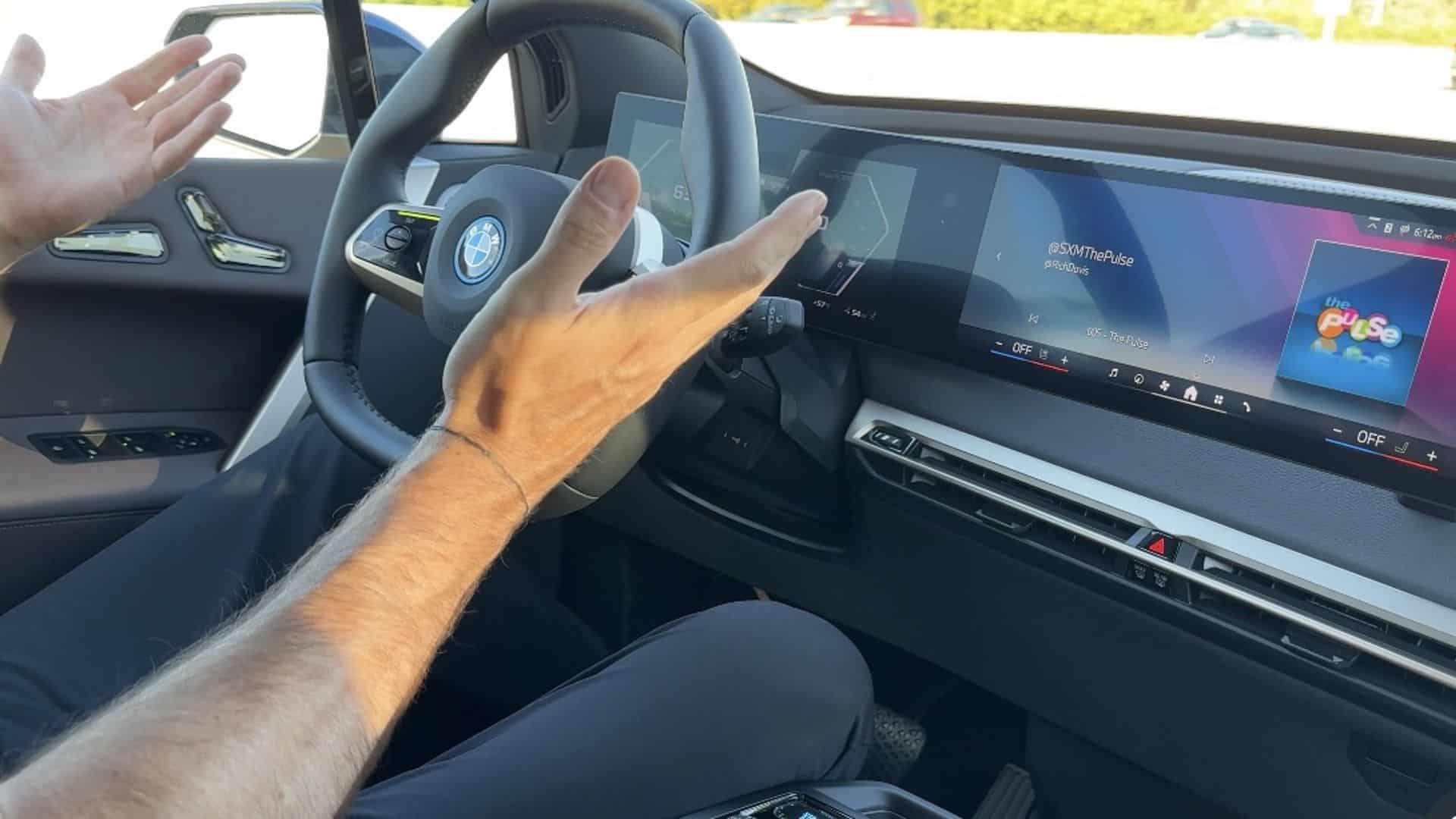In a recent comprehensive evaluation by the Insurance Institute for Highway Safety (IIHS), the performance of semi-autonomous driving systems from several automakers was scrutinized under a new set of testing criteria aimed at improving road safety and reducing the misuse of such technologies. This new assessment covered 14 semi-autonomous systems from 9 brands, including BMW’s Driving Assistant Pro (Level 2 functionalities), GM’ Super Cruise, Ford’s BlueCruise, and Tesla’s Autopilot.
14 Automakers Were Tested

Despite the diverse array of technologies tested, a staggering 11 systems were unable to meet the IIHS’s stringent requirements, earning a “Poor” rating. Lexus’ Teammate system with Advanced Drive was the only technology to secure an “Acceptable” rating. Meanwhile, GM’s Super Cruise and Nissan’s ProPilot Assist with Navi-link received “Marginal” ratings, standing out for their respective strengths in safety features and cooperative steering. BMW’s Driving Assistant Pro received a rating of “Good” in Lane Change and Cooperative Steering, “Acceptable” in the Driver Monitoring and Safety Features, “Poor” in Attention Reminders and Adaptive Cruise Control (ACC) Resume. The full ranking is here.
It’s important to clarify that these vehicles do not offer fully autonomous driving capabilities; rather, they require drivers to remain vigilant, keeping an eye on the road and overseeing the system’s operation. Drivers must be prepared to assume manual control of the vehicle in case of any issues. Additionally, these systems should not be confused with what are traditionally known as advanced driver-assistance systems (ADAS). The IIHS categorizes ADAS as technologies that enhance vehicle safety through features such as automatic emergency braking, blind spot detection, and lane departure prevention. BMW offers ADAS in a variety of vehicles, including but not limited to i5, i7, iX, X5. This year, the BMW 7 Series will receive a Level 3 ADAS in Europe.
A spokesperson for BMW of North America highlighted the novelty of these standards from the IIHS, pointing out the absence of homologated standards for such systems. The spokesperson also noted that the current evaluation heavily emphasizes driver monitoring and alert mechanisms, areas where many systems showed inadequacies according to the IIHS’s criteria. Full statement can be seen at the end of the article.
Testing Procedures
IIHS says that their new testing regimen is multifaceted, focusing on driver monitoring, attention reminders, emergency procedures, driver involvement, and essential safety features such as seatbelt engagement before system activation. These categories aim to ensure that semi-autonomous systems enhance, rather than detract from, overall road safety, particularly with a growing concern over pedestrian fatalities.
The IIHS employed various strategies to test the limitations of these semi-automated systems, such as covering the driver’s head with a cheesecloth to block their face from the vehicle’s internal cameras and sensors, and affixing ankle weights to the steering wheel to mimic the presence of a driver’s hands. IIHS is also proposing a test that can identify when a foam block the size of a cell phone is being used by the driver.
BMW X1 Was Tested By IIHS
The Driving Assistant Pro system in the 2024 BMW X1 has two distinct functionalities based on the speed of the car. BMW of North America says in a statement that IIHS’s evaluation of the X1 focused solely on a single aspect of its Driving Assistance Professional system, specifically the “hands-on” feature active at speeds above approximately 40 mph. This feature, which relies exclusively on steering wheel sensor inputs, aims to assist the driver by reducing fatigue without offering full “hands-off” capabilities.
Conversely, the “hands-off” Traffic Jam Assistant operates below about 40 mph to alleviate driver stress in dense traffic by autonomously steering, braking, and accelerating. This mode does engage an instrument panel-mounted camera to ensure the driver’s attention remains on the road, as physical contact with the steering wheel isn’t required.
Testing Standardization Is Necessary
Aside from the interesting findings, the test underscores a critical challenge that surpasses even technical limitations: the inconsistency in ADAS philosophies across car brands, especially around the conditions for disengagement and the alert methods. This risk becomes particularly important in scenarios where a household owns multiple vehicles equipped with differing systems. Therefore, there is a need for standardization and clear guidelines across the car industry in regards to advancements in driving assistance technologies.
Acceptable
- Lexus Teammate with Advanced Drive, 2022-24 Lexus LS
Marginal
- GM Super Cruise, 2023-24 GMC Sierra
- Nissan ProPilot Assist with Navi-Link, 2023-24 Nissan Ariya
Poor
- BMW Active Driving Assistant Pro, 2023-24 BMW X1
- Tesla Autopilot Version 2023.7.10, 2021-23 Tesla Model 3
- Tesla Full Self Driving (Beta) Version 2023.7.10, 2023-23 Tesla Model 3
- Mercedes-Benz Active Distance Assist Distronic with Active Steering Assist, 2022-23 Mercedes-Benz C-Class
- Lexus Dynamic Radar Cruise Control with Lane Tracing Assist, 2022-24 Lexus LS
- Ford Adaptive Cruise Control with Stop & Go and Lane Centering Assist, 2021-24 Ford Mustang Mach-E
- Ford BlueCruise, 2021-24 Ford Mustang Mach-E
- Genesis Highway Driving Assist 2, 2023-24 Genesis G90
- Genesis Smart Cruise Control/Lane Following Assist, 2023-24 Genesis G90
- Nissan ProPilot Assist 2.0, 2023-24 Nissan Ariya
- Volvo Pilot Assist, 2022-24 Volvo S90
Statement from BMW issued to media:
“We respect and appreciate the efforts of the IIHS to challenge our industry to make better, safer vehicles, but occasionally we differ philosophically about how to do certain things – in this case, how driver assistance systems should monitor driver attention and in what situations.
The test conducted by the IIHS in the BMW X1 covered only one function of one driver assistance system. The Driving Assistance Professional system in the X1 has both “hands-on” and a “hands-off” functionality. The “hands-on” function, which is what was tested, works at speeds over ~40 mph. It only considers input from sensors in the steering wheel, which we feel is sufficient given its intended purpose. It is not intended to be a totally “hands-off” system. It is a partly automated system intended to support the driver by reducing fatigue. In our testing, we have not seen a clear advantage in turning on the driver monitoring camera.
The “hands-off” function (Traffic Jam Assistant) only works at low speeds (below ~40 mph) when traffic conditions allow. It is intended to lessen stress and fatigue in high-traffic situations by steering, braking, and accelerating automatically. This function does use the camera mounted in the instrument panel to monitor driver attention because it doesn’t require the driver to touch the steering wheel. But the vehicle must be able to confirm the driver is keeping his or her eyes on the road to monitor the traffic situation.
BMW Highway Assistant, a newer, more sophisticated system available in the 5 Series, 7 Series, and other higher-end BMW models, delivers extended “hands-off” driving at highway speeds. Again, because it doesn’t require the driver to touch the steering wheel, it does utilize the camera to monitor driver attention. While we believe we offer safe and robust driver assistance systems, we will certainly consider the recommendations made in this report as these systems continue to evolve.”






































































